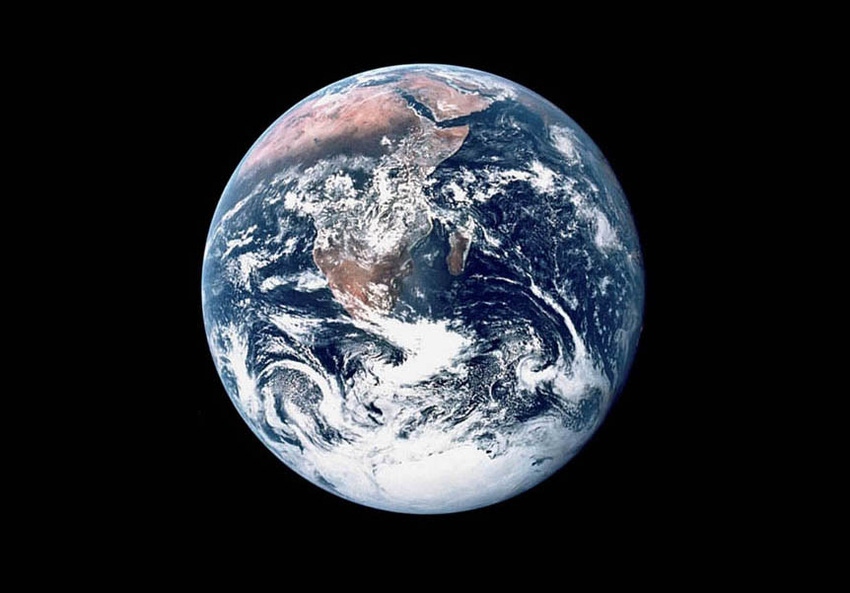
Is the day coming for tomatoes grown on the moon or beef cattle raised on Mars?
Modern farming has brought about many changes to the way crops are grown, from genetic engineering of seed varieties to advances in farm equipment and satellite guidance for precision farming. But leading aerospace engineers and biologists are currently involved in developing new technologies that may lead to farming fertile fields of another planet.
Few would argue that technology and science have taken the agricultural industry into the new millennium with a real bang. But news from the National Aeronautics & Space Administration (NASA) recently takes the issue of modern farming one giant step forward for mankind with news that very soon a new era of space farming will begin when a small Gravitational Biology Lab is delivered to the International Space Station (ISS).
ScienceDaily.com is reporting that once operational the new facility will provide environmental control, lighting, data transfer, commanding, and observation of experiments in Mars and moon gravity conditions on the space station, as well as the ability to mimic Earth's gravity for experimental applications.
With the addition of this biology lab—a subterfuge mounted work station—scientists will be able to establish seed germination boxes, plant growth chambers, animal and plant growth chambers, cell structure units and facilities designed to study gravitational effects on fruit flies and other plant pests.
Sounding more like a storyline out of an Asimov book or a Spielberg movie, the new lab could lead to advances in vaccines and medications and new discoveries in genetics, boldly going where farmers have never gone before.
Space research
While biological research is not new in space, the new lab takes space research deeper than ever before. Texas-based NanoRacks, LLC, is a commercial space utilization company operating with the NASA ISS National Laboratory organization. The company, in conjunction with its many partners, is developing a variety of capabilities and associated hardware to effectively utilize the ISS as an advanced biological research platform by leveraging recent advances in terrestrial biological research equipment.
According to a company White Paper, NanoRacks is no stranger to space station research equipment.
The company has provided miniature transmission and reflection microscopes to the space station and is flight hardening a state of the art off-the-shelf microplate spectrophotometer to take advantage of insitu analysis on-board the ISS to reduce or eliminate sample return to Earth. They have also developed and flown more conventional hardware to the ISS that efficiently utilizes the current and future capsule based transportation systems.
In all, NanoRacks has launched two permanent facilities and thirteen different experiments on board the Shuttle, HTV, Soyuz and Progress spacecrafts as well as returned payloads on the Shuttle and Soyuz. The Company has more than 50 payloads currently manifested over the next three years.
"This is an important step in the expansion of National Lab facilities aboard the space station," said Marybeth Edeen, former U.S. National Lab manager at NASA's Johnson Space Center. "Having companies develop research and facilities for the National Lab with their own funding demonstrates the beginnings of the commercial space marketplace that the National Lab was created to serve."
Centrifuges have been used in space since 1985 to conduct more than 130 experiments on 25 shuttle missions, resulting in the publication of more than 300 scientific papers. According to NASA, this heritage provides a variety of flight-proven experiment designs now available for use by researchers for all types of molecular and cellular investigations on animal and plant tissues.
The new NanoRacks facility design will provide fully automated culturing of cells and tissue, including "plug-and-play" payloads that require only a standard computer USB connection to access needed power and environmental controls.
As population numbers soar in the coming years and food production struggles to keep up with demand, more and more attention is being directed to the idea of growing food in specially designed farming colonies on such exotic places as the moon’s surface or Mars, an idea that not long ago was limited to filmmakers and science fiction writers.
But NASA scientists warn that the day may soon be coming when growing and raising food in an off-world environment may be more science fact than it is fiction, and now, they say, is the time to pioneer the possibility before the need arises.
About the Author(s)
You May Also Like






